The following material is taken from my session for the November 2018 Tennessee Foreign Language Teachers Association.
If you read me much, you know that I agree with the broader field that asking “Authentic or learner material?” as a guide for choosing resources is the wrong question. The real question is this:
What is going to fit?
What do I mean by fit? When I say fit, I mean support acquisition and push proficiency. Based on that definition, I would say a resource that fits supports an activity that is achievable, comprehensible, and engaging. Almost nothing else matters. Of course there are some other considerations that matter depending on the situation – a resource could contain inappropriate material. It could be on a platform you can’t access at school. But across contexts, those are the three criteria I can think of that are at the top of my list to answer this question: the resource must support an activity that is achievable, comprehensible, engaging. Whenever a resource I’ve decided to use is a total flop, I’ve violated one or more of these criteria.
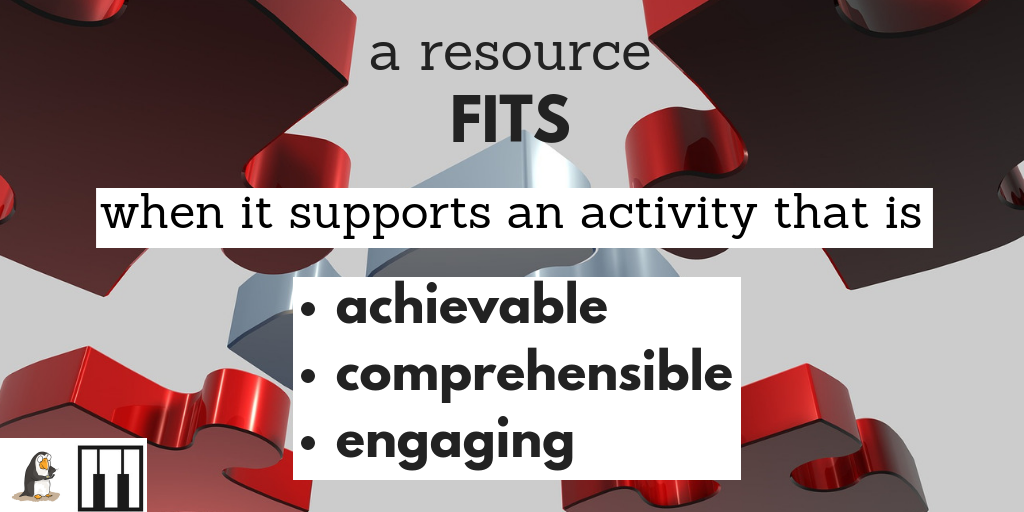
What prompts the search for resources
For most of us, one of four things becomes the base for a particular unit:
- a textbook chapter (“Around the house”)
- a novel (Robo en la noche)
- a theme (“Save the Oceans”)
- a project or question (“What are people in Buenos Aires doing to help the environment?”)
When we start looking for resources, it’s usually to support one of these. I want to spend most of this discussion on internet resources, but let me briefly mention the textbook and novel source directly.
Textbooks
Consider, for example, this textbook interpersonal speaking activity. Is it communicative? Does it fit (does it support acquisition and push proficiency)? If not, what can you do to make it fit?
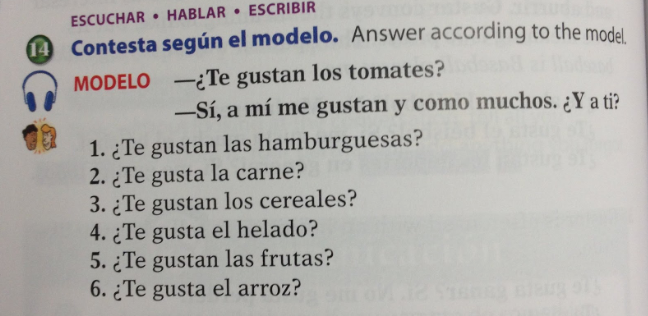
Novels
There’s not a lot you need to do to supplement a novel, but in my middle-grades class where I saw them once a week for 60 minutes last year, I needed them to interact more with the language in a way that wasn’t boring. So I’d take a piece of a chapter and swap out key details to make a little bit of a new story. Then, I’d ask the kids to choose one of my options or fill in the blank with a category word to come up with the rest of our new story. It was always fun to see how these story frames ended up.
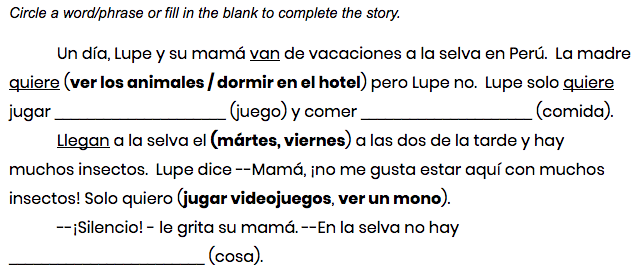
Searching beyond the books
Aside from a textbook, novel, or subscription site like Adiós Textbook or Tapas, you’re generally going to turn to the internet for resources. Ah, the bottomless pit that is Google. Here are a couple of tips that have helped me speed up and improve my results on searches for resources.
First, when searching for video or audio, I use terms to bring results that tend to be lists that are highly visual. Think in these terms: “favorite,” “best,” or “top 10.”
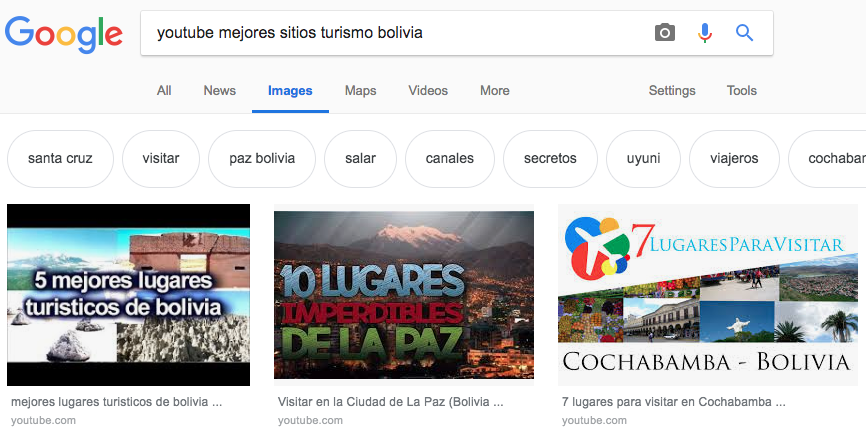
Second, I often turn to the images search and look for a vocabulary term plus the words infographic or meme. This brings me highly visual results that often have achievable language for my learners.

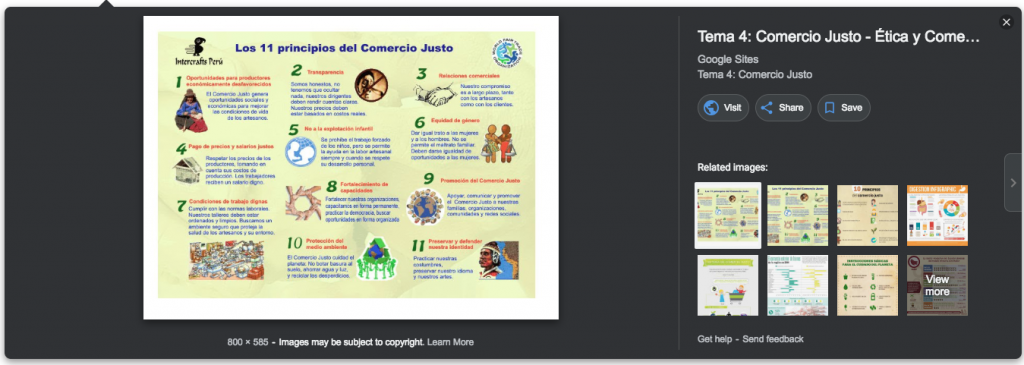
Back to the Can Dos
In determining whether a resource will support your activity or task, we need to be all about the Can Do statements. I’m in the middle of another mind shift on the Can Do statements in which we start with intercultural Can Do statements for a unit and then the language communication Can Do statements, interpretive and so on, are written to support those. To remind yourself of the power of the new NCSSFL-ACTFL Can Do statements, go spend 15 minutes with this post.
Put it to work
Let’s take a look at a couple of interpretive sources you could use. They’re both in English. Take a look at each one and see if you can come up with:
- A way to use the resource that fits a novice class (imagining they’re learning English) and a way that doesn’t fit.
- A way to use the resource that fits an intermediate class and a way that doesn’t fit.
Here’s your print resource, an infographic about Thanksgiving.

Here’s your audio resource, a video from a Mexican au pair on what is different in the United States.
What would you ask learners to do with these resources? Do these resources fit in a novice or intermediate class?
My favorite scaffolding tools
Scaffolding (ACTFL: “the support provided for learners to promote acquisition of skills and concepts”) is a key strategy to make a resource fit when otherwise it might not. These are my favorite scaffolding tools and strategies.
- For audio, certainly Edpuzzle. I can turn an otherwise incomprehensible video into a micro-listening activity focused on what is comprehensible by cropping, focusing students, scripting, clozing, etc.
- For reading I ask kids to do on internet articles at home, I occasionally use ActivelyLearn to focus their attention and ask questions about pieces that support acquisition and push proficiency.
- For reading I ask kids to do with authentic articles we use in class, I use a strategy I call Text Reform to format the text in a way that boosts comprehension, including using tabs to show relationships among sentences and making series of items into bulleted lists. I also pull out key vocabulary. Example from an article on the witches’ market in La Paz, Bolivia:
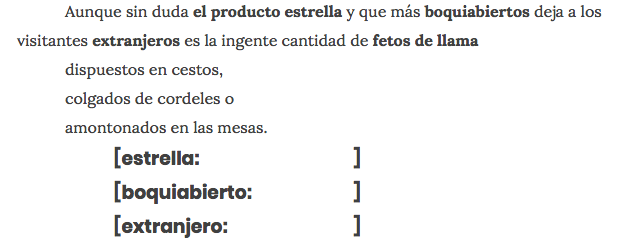
There you go – if the resource really fits, use it!
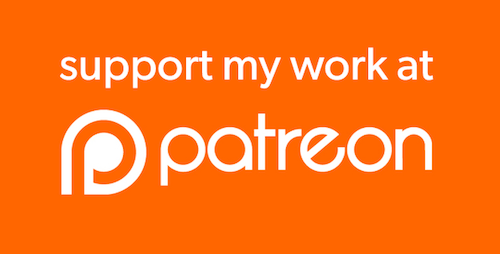 If Musicuentos has significantly helped you in your language teaching journey, consider becoming part of the “thanks” crew on Patreon. “La lotería” patrons receive every resource I produce, whether it’s a $2 activity or a $50 ebook guide, including content exclusively developed for conferences, as thanks for their sponsorship.
If Musicuentos has significantly helped you in your language teaching journey, consider becoming part of the “thanks” crew on Patreon. “La lotería” patrons receive every resource I produce, whether it’s a $2 activity or a $50 ebook guide, including content exclusively developed for conferences, as thanks for their sponsorship.
1 Comments
Comments are closed.




[…] for students, resources created for native speakers and even editing those resources! Check out Sara-Elizabeth’s post about how she decides what […]